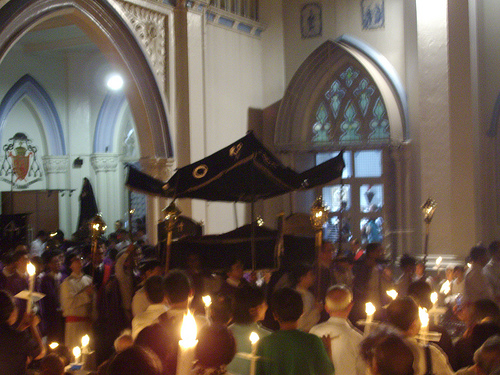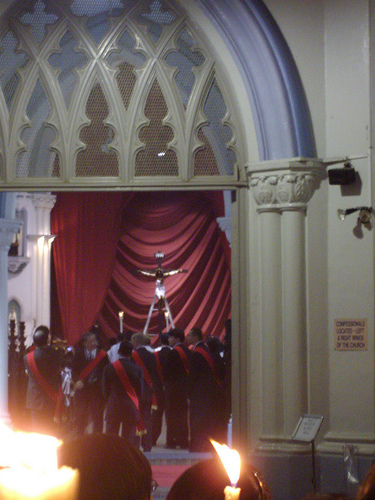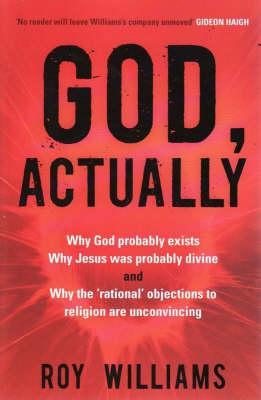Continued from Israel’s Second God (2 . . .) (notes from Margaret Barker’s The Great Angel) . . . .
What was the religion of Israel that the Deuteronomists (from the time of King Josiah and after) were attempting to reform?
One way Margaret Barker believes we can catch a glimpse of this religion is by examining the ways El (god) is used, and comparing it with uses of Yahweh.
Texts where El simply means “god”
Psalm 104:1 Bless the LORD (Yawheh), O my soul. O LORD (Yawheh) my God (El), thou art very great; thou art clothed with honour and majesty.
Deuteronomy 7:9 Know therefore that the LORD (Yawheh) thy God (El), he is God (El), the faithful God (El), which keepeth covenant and mercy with them that love him and keep his commandments to a thousand generations;
Joshua 22:22 The LORD (Yawheh) God (El) of gods, the LORD (Yawheh) God (El) of gods, he knoweth, and Israel he shall know; if it be in rebellion, or if in transgression against the LORD (Yawheh), . . .
Texts where El is the name or title of Yahweh
Isaiah 43:12-13 I have declared, and have saved, and I have shewed, when there was no strange god among you: therefore ye are my witnesses, saith the LORD (Yahweh), that I am God (El). Yea, before the day was I am he; and there is none that can deliver out of my hand: I will work, and who shall let it?
Isaiah 45:22 Look unto me, and be ye saved, all the ends of the earth: for I am God (El), and there is none else.
The Titles and tasks of El become the titles and tasks of Yahweh
Genesis 14:19 And he blessed him, and said, Blessed be Abram of the most high God (El Elyon), possessor of heaven and earth:
Isaiah 44:24 Thus saith the LORD, thy redeemer, and he that formed thee from the womb, I am the LORD that maketh all things; that stretcheth forth the heavens alone; that spreadeth abroad the earth by myself
Isaiah 51:13 And forgettest the LORD thy maker, that hath stretched forth the heavens, and laid the foundations of the earth; and hast feared continually every day because of the fury of the oppressor, as if he were ready to destroy? and where is the fury of the oppressor?
El the procreator becomes Yahweh the maker
Isaiah 44:24 and Isaiah 51:13 interestingly appear to modify the title used of El, Procreator or Generator of the earth etc by calling Yahweh the Maker or creator. The sexual or procreative functions of El have been replaced by a Maker god.
Isaiah appears to have removed the idea that god was a procreator of gods and men, and recast him as a creator. Margaret Barker (p.19):
the idea of a procreator God with sons seems to have fallen out of favour among those who equated Yahweh and El. (Those who retained a belief in the sons of God, e.g. the Christians, . . . were those who continued to distinguish between El and Yahweh, Father and Son. This cannot be coincidence.)
Examples where Yahweh has been cast as the Maker, not the Procreator, of heaven and earth.
Psalm 115:15 Ye are blessed of the LORD which made heaven and earth.
Psalm 121 2 My help cometh from the LORD, which made heaven and earth.
Psalm 124:8 Our help is in the name of the LORD, who made heaven and earth.
Psalm 134:3 The LORD that made heaven and earth bless thee out of Zion.
Psalm 146:5-6 Happy is he that hath the God of Jacob for his help, whose hope is in the LORD his God: Which made heaven, and earth, the sea, and all that therein is: which keepeth truth for ever:
Yahweh the Maker of Heaven and Earth becomes Yahweh the Maker of History
Isaiah 42:5, 9 Thus saith God the LORD, he that created the heavens, and stretched them out; he that spread forth the earth, and that which cometh out of it; he that giveth breath unto the people upon it, and spirit to them that walk therein: . . . . Behold, the former things are come to pass, and new things do I declare: before they spring forth I tell you of them.
Compare Isaiah 43:1-2, 15-21 But now thus saith the LORD that created thee, O Jacob, and he that formed thee, O Israel, Fear not: for I have redeemed thee, I have called thee by thy name; thou art mine. When thou passest through the waters, I will be with thee; and through the rivers, they shall not overflow thee: when thou walkest through the fire, thou shalt not be burned; neither shall the flame kindle upon thee. . . . . . . . I am the LORD, your Holy One, the creator of Israel, your King. Thus saith the LORD, which maketh a way in the sea, and a path in the mighty waters; Which bringeth forth the chariot and horse, the army and the power; they shall lie down together, they shall not rise: they are extinct, they are quenched as tow. Remember ye not the former things, neither consider the things of old. Behold, I will do a new thing; now it shall spring forth; shall ye not know it? I will even make a way in the wilderness, and rivers in the desert. The beast of the field shall honour me, the dragons and the owls: because I give waters in the wilderness, and rivers in the desert, to give drink to my people, my chosen. This people have I formed for myself; they shall shew forth my praise.
Jeremiah 32:17, 21 Ah Lord GOD! behold, thou hast made the heaven and the earth by thy great power and stretched out arm, and there is nothing too hard for thee: . . . . . And hast brought forth thy people Israel out of the land of Egypt with signs, and with wonders, and with a strong hand, and with a stretched out arm, and with great terror;
Psalm 136
Yahweh as creator of heaven and earth:
1 Give thanks unto the LORD; for he is good: for his mercy endureth for ever.
2 Give thanks unto the God of gods: for his mercy endureth for ever.
3 Give thanks to the Lord of lords: for his mercy endureth for ever.
4 To him who alone doeth great wonders: for his mercy endureth for ever.
5 To him that by wisdom made the heavens: for his mercy endureth for ever.
6 To him that stretched out the earth above the waters: for his mercy endureth for ever.
7 To him that made great lights: for his mercy endureth for ever:
8 The sun to rule by day: for his mercy endureth for ever:
9 The moon and stars to rule by night: for his mercy endureth for ever.
And Yahweh as creator of Israel’s history:
10 To him that smote Egypt in their firstborn: for his mercy endureth for ever:
11 And brought out Israel from among them: for his mercy endureth for ever:
12 With a strong hand, and with a stretched out arm: for his mercy endureth for ever.
13 To him which divided the Red sea into parts: for his mercy endureth for ever:
14 And made Israel to pass through the midst of it: for his mercy endureth for ever:
15 But overthrew Pharaoh and his host in the Red sea: for his mercy endureth for ever.
16 To him which led his people through the wilderness: for his mercy endureth for ever.
17 To him which smote great kings: for his mercy endureth for ever:
18 And slew famous kings: for his mercy endureth for ever:
19 Sihon king of the Amorites: for his mercy endureth for ever:
20 And Og the king of Bashan: for his mercy endureth for ever:
21 And gave their land for an heritage: for his mercy endureth for ever:
22 Even an heritage unto Israel his servant: for his mercy endureth for ever.
23 Who remembered us in our low estate: for his mercy endureth for ever:
24 And hath redeemed us from our enemies: for his mercy endureth for ever.
25 Who giveth food to all flesh: for his mercy endureth for ever.
26 O give thanks unto the God of heaven: for his mercy endureth for ever.
Next post
Next post on this topic will look at the question of whether El, the more ancient name for god according to the Pentateuch — Exodus 3:15, Exodus 6:2-3; Deuteronomy 32:8) waned over time. If not, how strong are the hypotheses proposed to explain its continuing usage?
Like this:
Like Loading...









